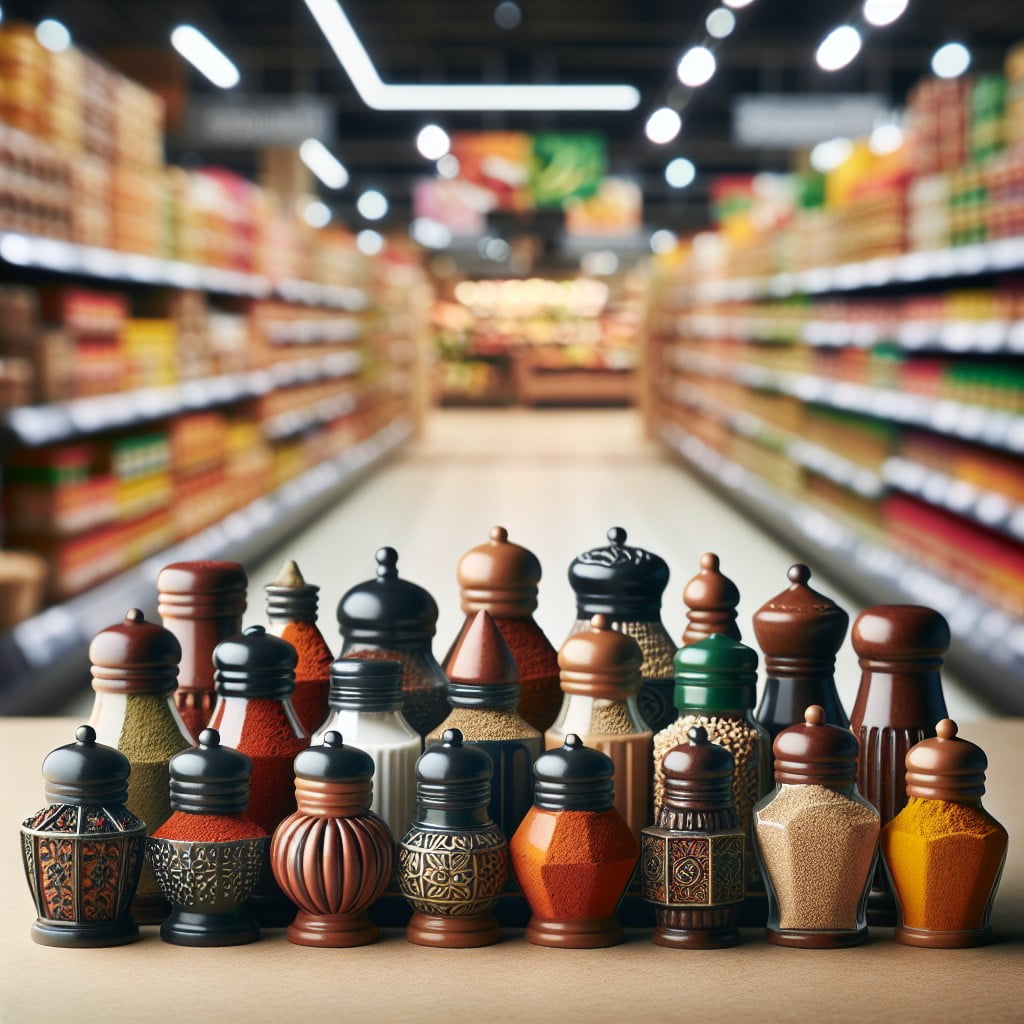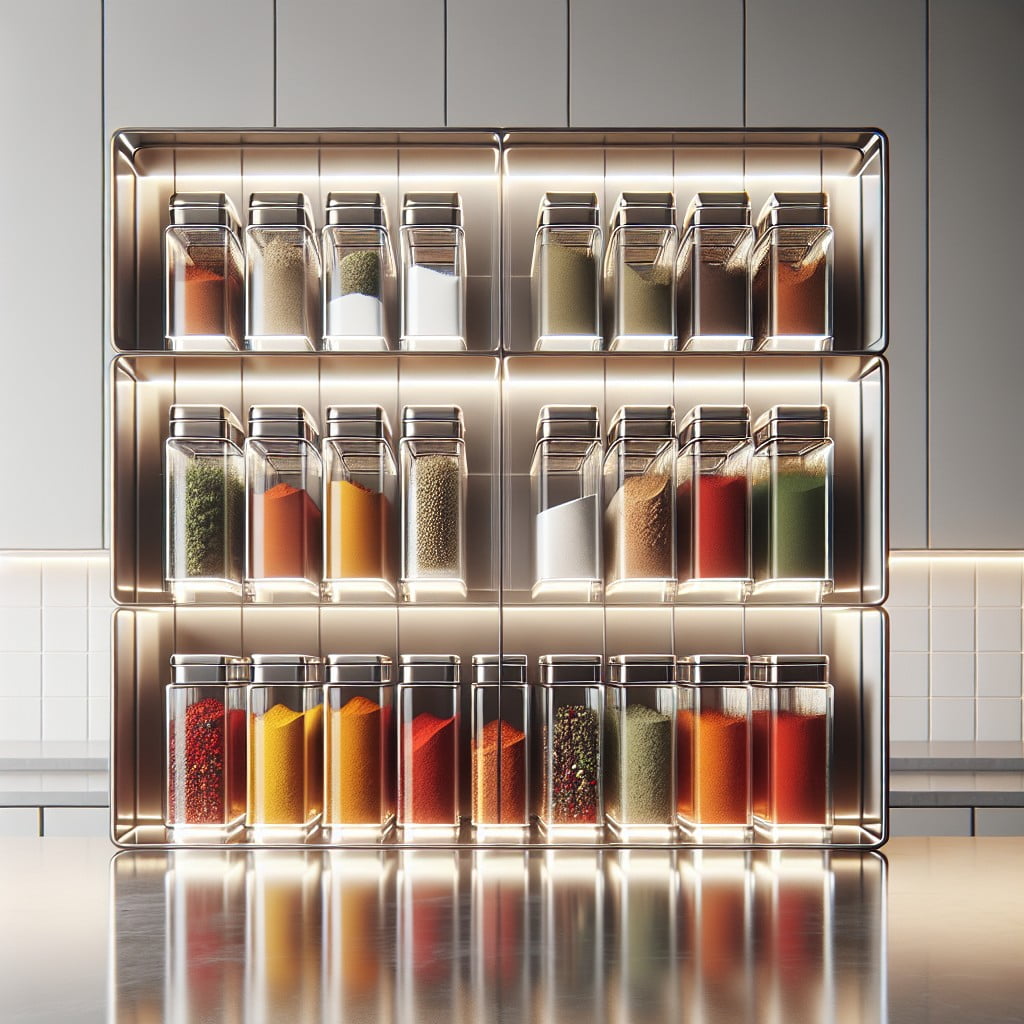Last updated on
Explore the dynamic world of the spice container market as we delve into its current trends, major players and future projections in this comprehensive analysis.
The global spice container market is a dynamic and evolving industry, with key trends shaping its growth. In 2020, the market size was valued at approximately $2.02 billion and is expected to grow at a compound annual growth rate (CAGR) of 5.8% from 2021 to 2028. This surge is primarily driven by the increasing demand for convenient and efficient storage solutions in kitchens worldwide.

Factors such as material type, design innovation, and sustainability are influencing consumer preferences. Whether you’re an industry insider, a home cook, or a curious reader, this article will delve deeper into these statistics, offering a comprehensive understanding of this booming market.
The glass spice market is anticipated to accumulate a market value of US$5.2 billion in 2023
Increasing consumer preference for aesthetic and durable spice containers plays a huge role in driving the glass spice container market. This trend, coupled with the longevity and reusability factors of glass containers, is projected to fuel the overall market expansion. The burgeoning sector anticipates an impressive accumulation of approximately US$5.2 billion in 2023, further bolstering the growth of the home decor and crafts industry. This slated increase also points to a potential surge in glass container production to meet the escalating market demand.
The market is expected to grow at a CAGR of 4.9% from 2023 to 2033
Expanding tastes and growing interest from consumers in adventurous cuisine are projective factors contributing to this growth. The rising demand for exotic, ethnic, and spicy foods means the industry is envisaged to rise with a compound annual growth rate (CAGR) of 4.9% over the next decade (2023-2033).
Various influential elements, such as culinary trends and health awareness, are expected to accelerate this growth further. As more and more people discover the numerous health benefits and flavor enhancement associated with spices, the market trajectory for spice containers is continuously upward.
The powder segment held the largest market share of 56.1% in the global revenue for 2022
With over half of the global spice container market under its purview, the powder segment demonstrated incredible robustness in 2022. According to recent statistical data, it commanded an imposing 56.1% share of the total revenue. This dominant position can be attributed to customer preferences for powdered spices, largely driven by their convenience and versatility in various culinary applications.
Continued expansion within this market segment is anticipated, backed by ongoing innovations in powder spice packaging, designed to enhance user experience and extend shelf life.

The retail channel is expected to register faster growth in the next years
Continued growth at a brisk pace is predicted for spice containers sold through retail channels. This trend is attributed to increasing consumer demand for convenient and hyper-organized kitchen storage solutions. Favorably, the expansion of e-commerce platforms offering a wide variety of container options contributes to this acceleration.
Moreover, the rising trend of gourmet cooking and baking at home has generated an uptick in sales. These factors combined assure that the retail channel for spice containers will experience accelerated growth in the coming years.
The average spice import price stood at $3,995 per ton in 2022
In 2022, per ton import costs for a variety of spice products were recorded at $3,995. This value establishes a critical point in analyzing the overall cost metrics in the spice industry. It serves as an indicator for traders and businesses as they establish their pricing strategies, reflecting the input costs associated with sourcing diverse spice offerings.
This valuation has a direct bearing on retail prices and ultimately, consumer choices and preferences.
There’s been a 10% pickup of price import for spices from last year
This surge in the import price can be attributed to a myriad of factors such as inflation, shipping costs, and conditions in spice-producing countries.
Higher costs, in return, have implications on the spice container industry, as manufacturers may need to adjust their pricing strategies.
Year-over-year trends indicate that these increases might continue, making it an important area for stakeholders in the spice container industry to monitor closely.
China supplied 92.5K tone of spices to the US and is the top supplier of the country
In recent years, China has emerged as the foremost supplier of spices to the United States. With a shipment totalling 92.5K tonnes, this Asian powerhouse has solidified its foothold in the US spice market. Such an impressive figure underscores China’s significant contribution to meeting the increasing demand for spices in American households and industries.
This considerable volume also illustrates the expanding culinary diversity in the US, where ingredients from around the globe, including a variety of spices, are being embraced.
The total export volume increased at an average annual rate of 8.3% over the last years
In recent years, the spice container market has experienced noteworthy growth, notably in its export volume. This acceleration has averaged an annual rate of 8.3%, showcasing the expanding global demand for quality and diverse spice containers.
Such sustained expansion is indicative of the spice container industry’s potential for further global market penetration and the increasing integration of various cuisines worldwide. Not only does it reflect the economic health of this sector, but it also highlights an upward trajectory that stands to impact both manufacturers and consumers in the years to come.
Canada is the top export market of the US with 20.0K tons each year
With a steady flow of 20,000 tons annually, Canada stands as the United States’ prime export market for spice containers. This robust exchange is a testament to the thriving culinary landscapes of both nations, with American spice varieties finding their way into Canadian homes and food establishments.
The export volume’s consistency also indicates the strong trade relationship between the neighboring countries, underscoring the significance of the spice container market in their bilateral commerce. This circuit of trade also contributes to the diversity of available spices and seasonings in Canada, enhancing the region’s gastronomic diversity.
Spices and seasonings inflation in the US stood at 0.050% in April 2023
While closely monitoring the inflation trends in the US market for spices and seasonings, a minor increase of 0.050% was noted in April 2023. This marginal rise indicates the stability of the market during this period, yet it still warrants careful tracking.
The inflation rate influences both businesses and consumers in terms of supply costs and purchasing power, respectively. It’s also a pivotal factor when setting retail prices and crafting budget plans.
Further changes in this rate could lead to significant market shifts, underscoring the necessity to keep a keen eye on these fluctuations.
References:
- https://www.futuremarketinsights.com/
- https://www.reuters.com/
- https://www.indexbox.io/
Recap:




